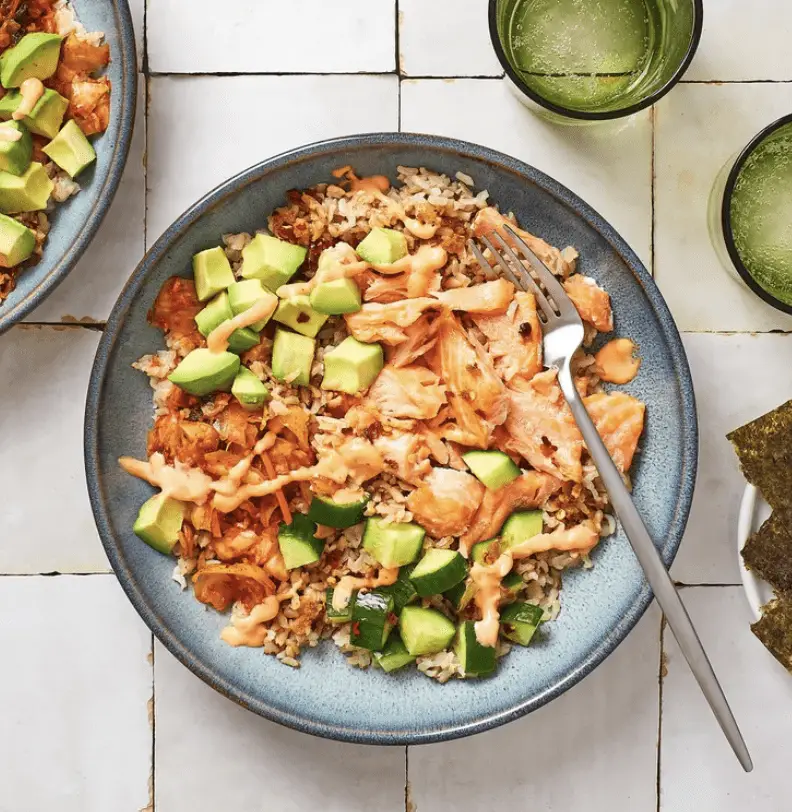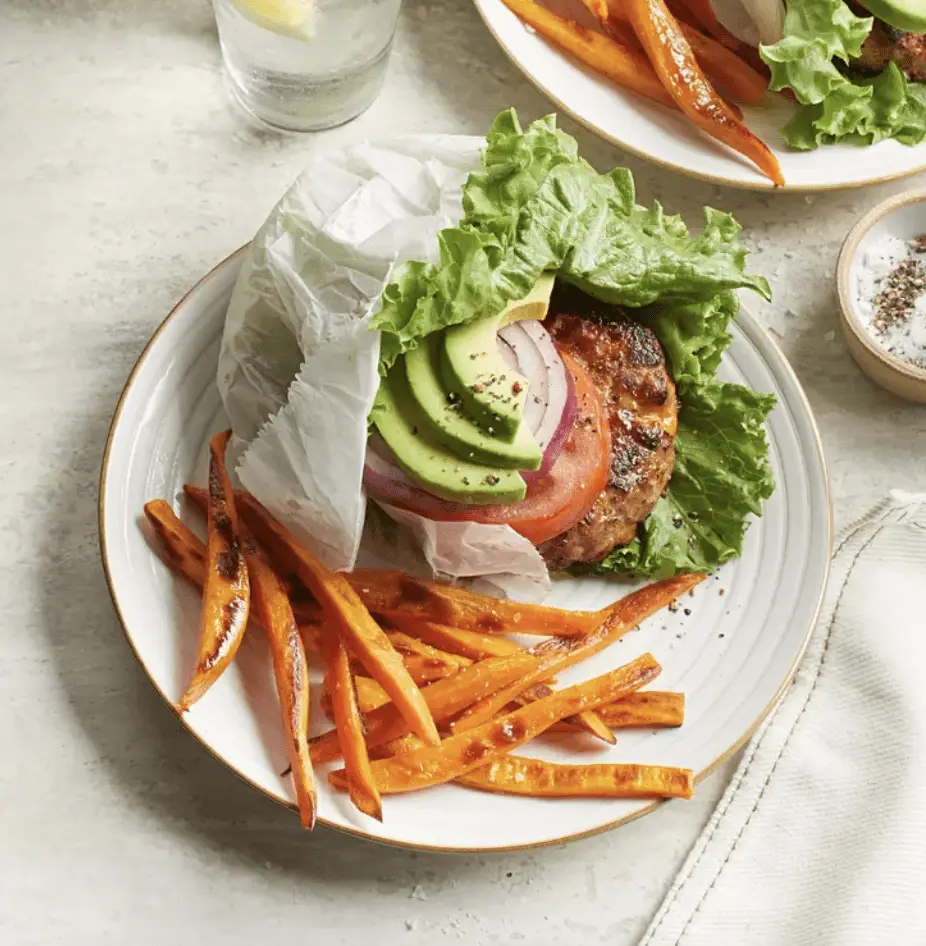

According to the CDC, gestational diabetes is a type of diabetes that can develop during pregnancy in women who don’t already have diabetes.
Every year, 2% to 10% of pregnancies in the United States are affected by gestational diabetes.
Like other types of diabetes, gestational diabetes affects how your cells use sugar (glucose). Gestational diabetes indicates that you have high blood sugar, which can negatively affect your pregnancy and your baby’s health.
Gestational diabetes is on a spectrum—some women have very mildly elevated blood sugar that’s easily managed with lifestyle changes. Others may have preexisting blood sugar issues (prediabetes or type 2 diabetes), or have significantly elevated blood sugar that requires more medical management. A small proportion of women will have uncontrolled blood sugar.
Because all of these scenarios fall under the umbrella of “gestational diabetes”, it can be absolutely terrifying for women to be diagnosed with gestational diabetes. That’s what I’m here for :). The goal is normal blood sugar levels and if you can maintain that for the majority of your pregnancy, your likelihood of facing complications or requiring extra interventions is low.
As per the CDC, gestational diabetes occurs when your body can’t make enough insulin during your pregnancy. Insulin is a hormone made by your pancreas that acts like a key to let blood sugar into the cells in your body for use as energy.
During pregnancy, your body makes more hormones and goes through other changes, such as weight gain. These changes cause your body’s cells to use insulin less effectively, a condition called insulin resistance. Insulin resistance increases your body’s need for insulin.
All pregnant women have some degree of insulin resistance during late pregnancy. However, some women have insulin resistance even before they get pregnant. They start pregnancy with an increased need for insulin and are more at risk to develop gestational diabetes.
Babies born to overweight or diabetic moms have a much higher lifetime likelihood of developing chronic health problems associated with obesity and diabetes. And women who develop gestational diabetes have at least a 50% chance of becoming diabetic later in life.
According to the Mayo Clinic, risk factors for gestational diabetes include:








Gestational diabetes that’s not carefully managed can lead to high blood sugar levels during pregnancy, which can cause problems for you and your baby. The Mayo Clinic states that following complications can occur:











In addition to the standard glucose tolerance test that your doctor will ask you to run, make sure your OB runs a few critical lab tests to check in on your blood sugar and insulin regulation. Ask your OB to run the following lab tests:
Ideally, request that these tests be done in first trimester as well, in addition to second trimester when the more traditional glucose challenge testing takes place between 26-28 weeks.
I don’t recommend drinking the traditional Glucola drink for your glucose challenge test. That stuff is not great and contains a slew of toxic ingredients that I would never recommend ingesting, much less during PREGNANCY! Instead, ask your OB if you can use the Fresh test, which is a MUCH cleaner alternative to Glucola.
I also recommend doing your own at-home blood sugar tracking with a glucometer for at least 2 weeks, checking daily fasting blood sugar levels, in addition to 1 hour and 2 hour post-meal blood sugar levels daily. Take this information with you to your OB so they can see how your blood sugar responds to eating your regular diet (ideally a nutrient-dense, low sugar way of eating!).
If you’re at higher risk for gestational diabetes, your doctor may test you earlier in your pregnancy. Blood sugar that’s higher than normal early in your pregnancy may indicate you have type 1 or type 2 diabetes rather than gestational diabetes.
The average blood sugar levels in healthy pregnant women are as follows:
Fasting: 80.9 +/- 7.8mg/dl
1 hour post-meal: 108.9 +/- 12.9mg/dl
2 hours post-meal: 99.3 +/- 10.2mg/dl

There are no guarantees when it comes to preventing gestational diabetes—but the more healthy habits you can adopt before pregnancy, the better. If you’ve had gestational diabetes with a previous pregnancy, transitioning to eating a nutrient-dense, real food diet, devoid of simple sugars and refined carbohydrates is critical in maintaining normal blood sugar numbers and may reduce your risk of being diagnosed with gestational diabetes in future pregnancies or developing type 2 diabetes in the future.
The most important thing you can do to prevent gestational diabetes is to eat a nutrient-dense, real food diet that is devoid of all refined grains and refined sugars, as this is the number one tactic for maintaining normal blood sugar and insulin levels during pregnancy.
If you’re above your ideal/healthy weight pre-pregnancy, it’s important to get into a healthy weight range before getting pregnant. The best way to optimize a healthy weight—you guessed it!—is to eat a nutrient-dense, real food diet!
Studies are showing that what you eat can lessen the risk of gestational diabetes, at least for some women. Research has shown that eating a lower-glycemic diet reduces the chance a woman will require insulin by HALF. (Diabetes Care, 2009)
It’s important to eliminate all sources of refined/processed carbohydrates from your diet, including refined breads, cereal, pasta, crackers, granola bars, chips, baked goods, sweets, desserts, juice, soda, and all added sweeteners.
Focus on eating high-quality clean protein (both animal and plant sources), lots of organic vegetables, and healthy fats at every single meal and snack. Your carbohydrate intake should solely come unrefined sources such as: vegetables, low glycemic fruit, starchy root vegetables, whole non-gluten grains, beans, and legumes.
Your pancreas, the organ that produces insulin, undergoes dramatic changes in pregnancy as it prepares to pump out at least triple the amount of insulin (this is to overcome the innate insulin resistance of late pregnancy and to keep your blood sugar in that nice 20% lower than usual zone). In order to do this, the pancreas needs enough of certain amino acids, suggesting that inadequate protein consumption during the first trimester is a risk factor for gestational diabetes.
Another study found higher rates of gestational diabetes among women who ate more cereal, cookies, pastries, and drank juice, while lower rates were found in women who regularly ate nuts (Clinical Nutrition, 2016).
Simply eating more than your body needs is also a risk factor, given that excess weight gain, especially in the first trimester, ups the odds that you’ll get gestational diabetes. Overconsumption of high-glycemic carbohydrates, in particular, is consistently linked to excess weight gain and elevated blood sugar levels.
And this might surprise you, but excessive fruit intake in pregnancy is linked to higher odds of gestational diabetes, especially high glycemic fruit (more is not always better when it comes to fruit).
Not only is the diagnosis itself a tough one to receive, there’s also the matter of making those lifestyle modifications that will help you manage the condition for the duration of your pregnancy.
But rest assured, mama: mothers everywhere can (and do!) lead healthy pregnancies that produce very healthy babies after a gestational diabetes diagnosis. The key is management—and much of that happens through what you eat.
Of course, changing up your diet is never easy, especially when you’re pregnant. Cravings are real. So are food aversions. And while it may be tempting to eschew the stuff that makes your tummy turn (like broccoli and chicken) in favor of those that sound even more amazing than usual (ice cream, ice cream, and more ice cream!), eating a protein-rich, fiber-fueled diet that’s low in refined grains and sugar is so important.
If you’re wondering what the best diet for gestational diabetes is, the answer is that it’s not one-size-fits-all. The overall goal is to incorporate foods that support healthy blood sugar levels.
Here are a few guidelines to incorporate when building your gestational diabetes friendly meal plan:

Carbohydrates raise blood sugar more than fat and protein, so it’s important to pay attention to the type and amount of carbohydrates you’re eating. If you’re eating carbohydrates, make sure they are one ingredient, real food sources of carbohydrates. Think beans, legumes, lentils, winter squash, sweet potatoes, plantains, whole non-gluten grains (rice, oats, quinoa, millet, buckwheat, spelt), and fruit.
Strictly stay away from refined carbohydrates such as bread products, cereal, pasta, cookies, cakes, sweets, bagels, crackers, granola bars, pretzels, etc. Anything that lists ‘refined flour’ as an ingredient is one to stay away from.
Avoid eating meals that are carb-heavy, like a bagel, a bowl of pasta, a plate of pancakes, baked goods, etc. Instead eating a diet rich in healthy fats and proteins helps to stabilize blood sugar, balance hormones, and decrease insulin resistance.
Make sure every meal you eat contains the following: organic, high-quality protein (both animal & plant-based sources), a healthy fat source, a variety of organic vegetables, and fiber-rich real food sources of carbohydrates like starchy vegetables, fruit, beans & legumes, and whole non-gluten grains.
Focus on eating real, whole, fresh food that you cook yourself. Pick a rainbow of colors of vegetables and eat a lot of them. Eat good fats from pastured egg yolks, fish, coconut oil, grass-fed butter or ghee, traditional animal fats (like tallow and duck fat!), avocados, and extra virgin olive oil. Eat plenty of high quality, clean, pasture-raised animal protein like red meat, eggs, poultry and fish; as well as plant-based protein from beans and legumes. Eat small amounts of brightly colored fresh fruit. Enjoy raw nuts and seeds; a variety of spices; and high-fiber, unrefined, unprocessed carbohydrates (like sweet potatoes, yams, and squash).
Pairing carbohydrates with protein and healthy fats prevents spikes in blood sugar and helps your body more easily break down the carbs.
It also keeps you full, since protein and fat are digested more slowly than carbohydrates. For example, instead of just having an apple for a snack, pair it with organic peanut butter (with no added oils or sugars), which provides protein and healthy fat.
Aim to eat about every 3-4 hours to keep blood sugar levels steady. Do not skip meals — it deprives you and your baby of nutrients and could cause your blood sugar to drop too low, and later result in you overeating foods that aren’t great for you or baby.
Protein needs while pregnant are 1.7 grams of high quality, organic protein/kg of bodyweight per day.
Calculate how much you currently weigh in kilograms and then multiply that number by 1.7 to see exactly how many grams of protein you should be consuming per day.
Remember that as your body weight increases in pregnancy, your protein needs increase as well. Always choose clean, high quality, organic sources of both animal and plant-based protein sources at every meal. As a rule of thumb, aim for at least 30 grams of protein per meal.
Use healthy fats in your recipes, like coconut oil, ghee and grass-fed butter. These foods help to balance your blood glucose levels.
Make sure you’re eating plenty of high fiber foods, which can help to slow down or decrease the release of insulin into the bloodstream. Include fiber in all of your meals and snacks throughout the day. Some of the best options include avocados, squash, beans, lentils, chia seeds, and flax seeds.
Include 1-2 tsp of high quality, organic cinnamon in your diet per day.
Choose healthy fats like nuts/seeds, olive oil, fatty fish, and grass-fed butter, as well as green leafy vegetables.
Foods rich in fiber and protein are also important to help manage gestational diabetes as they slow digestion time (and reduce insulin spikes!).
Try asparagus, kale, Brussels sprouts, broccoli, cauliflower, and artichokes.
Studies suggest that women who are deficient in vitamin D are more likely to develop gestational diabetes. Getting some sunshine and supplementing with vitamin D can help boost vitamin D levels.
Supplementing with chromium, a necessary mineral that helps metabolize carbohydrates, may also be beneficial.
Supplementing with magnesium can be helpful — in one study, pregnant women with gestational diabetes were given 250 mg of magnesium daily for 6 weeks. Magnesium significantly improved blood sugar levels significantly and reduced markers of inflammation and cell damage. Their babies also saw a 20.6% reduction in excess bilirubin, which can cause jaundice.
Easier said than done, but try to make quality sleep a priority. Sleep deprivation raises the stress hormone cortisol, contributing to unhealthy belly fat. Insulin sensitivity decreases rapidly and raises the risk for diabetes when we’re not getting enough quality sleep.
Exercise plays an important role in lowering your blood’s glucose level. When you exercise, your muscles can more efficiently use insulin to process blood sugar and use it for energy.
In the long term, regular exercise can lower your A1C—your body’s average blood glucose level over a period of 2-3 months. One study found that taking just three short walks (15-20 minutes) each day after meals was enough to help reduce blood sugar levels. In fact, those walks were just as effective over the span of 24 hours as a single 45-minute walk.
Here’s the thing—once you hit the “hangry” phase during pregnancy, you need to get food in your belly asap, so it’s important to keep quick, snackable things ready to go.
Here are five of my fav quick ‘n easy gestational diabetes friendly snacks:
Walnuts and organic blueberries are a powerful nutrient-rich and low-carb combo that’s perfect for maintaining a healthy pregnancy while dealing with gestational diabetes. Walnuts are a great source of protein, which helps keep your blood sugar from spiking too high (and they’re chock-full of omega-3-fatty acids, supporting baby’s healthy brain growth, learning, and memory development).
Research suggests that antioxidant-rich blueberries may even help your body process glucose more efficiently. Plus, they’re full of fiber, which helps prevent pregnancy constipation. Aim for a half cup of blueberries and 14 walnut halves for the ideal snack.
Eggs deliver ~6 grams of protein each and they naturally contain very little to no carbs, making them a filling snack that can ward off hunger between meals. And, since hard boiled eggs are also rich in omega 3 fatty acids and vitamin D, they’re an ideal snack for blood sugar control. Research has shown that low levels of vitamin D could increase a person’s risk of gestational diabetes—and that consuming vitamin D during pregnancy can help with blood sugar regulation. Plus, eggs are a good source of iron, an essential mineral to support healthy blood flow—super-important during pregnancy.
The best thing about hard boiled eggs? Batch boil them at the beginning of the week, and eat them as you need them! Be sure you always purchase organic, pasture-raised eggs
Bell peppers are loaded with vitamin C, an inflammation-fighting antioxidant crucial for stabilizing blood sugar. When you cut organic red, yellow or orange bell peppers into dippable sticks and pair them with hummus, you’ll reap even more blood sugar benefits thanks to the added protein and fiber. Bonus: hummus contains iron, which is better absorbed when eaten with vitamin C-rich foods, which makes bell pepper and hummus a great match made to help gestational diabetes. Make sure you always purchase organic bell peppers, as they are high on the dirty dozen list. And always look for hummus that only uses olive oil, no other refined oils.

Avocados are a nutritional powerhouse, brimming with omega-3 fatty acids, fiber, potassium, folate, and choline. Plus, they’re a very low-sugar fruit that contains protein, making it an ideal snack for blood sugar control. The best part is you can eat the avocado straight out of its skin, it’s the ultimate portable snack! Slice the avocado in half, scoop out the pit, and then lightly salt with sea salt and a squeeze of fresh lemon juice for a delicious snack on the go! Organic grass-fed jerky is the best portable high-protein snack ever! I always have a few jerky sticks in my purse.
ingredients
1 large zucchini, shredded or grated and strained until all liquid is removed
2 large carrots, shredded or grated
1 large sweet potato, shredded or grated
1 teaspoon sea salt
1 teaspoon rosemary, chopped
1 teaspoon sage, chopped
12 organic eggs, beaten
1 tablespoon butter or coconut oil
directions
1. Preheat the oven to 375 F.
2. Strain the zucchini with a cheesecloth or strainer bag until all the liquid is drained from the zucchini.
3. Mix together the zucchini, carrots, sweet potatoes, salt, herbs, and eggs in a large bowl. Set aside.
4. Grease a 9 x 13 inch baking dish with butter, and pour the egg mixture into the pan. For a swirled effect, use a fork to create a circular pattern before baking.
5. Bake for approximately 45 minutes or until the edges are brown. The quiche will puff up while baking and then deflate when removed from the oven.

ingredients
½ cup unsweetened MALK oat or nut milk
2 tablespoons chia seeds
2 teaspoons pure maple syrup
½ teaspoon unsweetened cacao powder
¼ teaspoon vanilla extract
½ cup fresh raspberries, divided
2 tablespoons organic nut butter (almond, peanut, cashew, pecan, coconut, etc)
1 tablespoon toasted sliced almonds, divided
directions
1. Stir together non-dairy milk, chia seeds, maple syrup, cacao powder and vanilla together in a small bowl. Cover and refrigerate for at least 8 hours and up to 3 days.
2. When ready to serve, stir well. Spoon about half the pudding into a serving glass (or bowl) and top with half the raspberries, 1 tbsp nut butter and almonds. Add the rest of the pudding and top with the remaining raspberries, nut butter and almonds.

ingredients
1 medium ripe banana, the riper the better
2 tablespoons gluten-free sprouted quick oats (One Degree Food is my favorite brand)
1 large egg, beaten
2 tablespoons chopped pecans
directions
1. Mash banana with a fork in a medium bowl until smooth. Add egg and oats and mix well.
2. Heat a large nonstick skillet over medium-low heat, pour the batter to make 3 pancakes. Top with pecans, and cook for about 3 to 4 minutes. Turn and cook for 3 to 4 minutes, until golden.
3. Top with 1 teaspoon of your favorite syrup or honey if desired.

ingredients
4 ounces of wild-caught salmon
1 teaspoon avocado oil
⅛ teaspoon Celtic sea salt
1 cup brown rice
1 cup water
2 tablespoons Primal Kitchen brand mayonnaise (avocado oil-based)
1½ teaspoons organic Tamari
1 teaspoon mirin
½ teaspoon freshly grated ginger
¼ teaspoon crushed red pepper
½ ripe avocado, chopped
½ cup chopped cucumber
¼ cup kimchi
12 (4-inch) sheets nori (roasted seaweed)
directions
1. Preheat the oven to 400F. Line a small rimmed baking sheet with foil. Place salmon on the prepared pan. Drizzle with oil; season with salt. Bake until the salmon flakes easily with a fork, 8 to 10 minutes.
2. Meanwhile, combine rice and water in a small saucepan; cook according to package directions. Mix mayonnaise and Sriracha in a small bowl; set aside. Whisk tamari, mirin, ginger, crushed red pepper and salt in another small bowl; set aside.
3. Divide the rice between 2 bowls. Top with salmon, avocado, cucumber and kimchi. Drizzle with the tamari mixture and the mayonnaise mixture. Mix the bowls, if desired, and serve with nori.

ingredients
dressing
4 tablespoons olive oil
2 tablespoons balsamic vinegar
2 teaspoons dijon mustard
2 tablespoons finely minced shallot
⅛ teaspoon sea salt and pepper
salad
5 ounces arugula
3 cups cubed watermelon
4 ounces block organic sheep feta cheese, crumbled
flaky sea salt, aleppo pepper, freshly cracked pepper to taste
directions
1. Make balsamic vinaigrette dressing. Whisk together olive oil, balsamic vinegar, dijon, shallot, salt, and pepper until emulsified.
2. Assemble salad. In a large bowl or individual plates, layer lettuce on the bottom. Toss arugula with dressing and layer into individual plates or a salad bowl. Top with watermelon and feta cheese. Drizzle with dressing. Top with freshly cracked pepper to taste.

ingredients
fries
1 medium sweet potato (12 oz.), peeled
2 teaspoons avocado oil
⅛ teaspoon sea salt
burgers
8 ounces ground organic grass-fed beef or bison
½ teaspoon garlic powder
½ teaspoon ground pepper
¼ teaspoon sea salt
2 teaspoons avocado oil
2 slices sweet onion, such as Vidalia
2 thick slices tomato
½ avocado
4-6 large, soft lettuce leaves, such as green leaf or butterhead
directions
1. To prepare fries: Preheat the oven to 425F.
2. Slice sweet potato into ¼” thick matchsticks. Place on a baking sheet, drizzle with oil, and toss to coat. Sprinkle with ⅛ teaspoon salt. Bake, flipping halfway through, until tender and crisp-edged, 20 to 25 minutes.
3. Meanwhile, prepare burgers: Using your hands, mix ground meat, garlic powder, pepper, and salt in a medium bowl. Shape into two 4-inch patties, about ¾” thick.
4. Cook burgers either on the grill or on a cast iron skillet. Cook until done to your liking.
5. To assemble the burgers, top each patty with a slice of onion and tomato, and half the avocado slices. Carefully wrap each one in 2 to 3 lettuce leaves, wrapping as tightly as you can. Serve with the sweet potato fries.
If possible, I recommend asking your OB for the Fresh test, which is a MUCH cleaner alternative to the traditional Glucola one. The glucose challenge testing usually takes place between 26-28 weeks gestation; however, if you’re at higher risk for gestational diabetes, your doctor may test you earlier. An elevated hemoglobin A1C level or a fasting blood sugar results that’s higher than normal early in your pregnancy may indicate you have type 1 or type 2 diabetes rather than gestational diabetes.
The average blood sugar levels in healthy pregnant women are as follows:
Fasting: 70.9 +/- 7.8mg/dl
1 hour post-meal: 108.9 +/- 12.9mg/dl
2 hours post-meal: 99.3 +/- 10.2mg/dl
Risk factors for gestational diabetes include being overweight or obese, not being physically active, having prediabetes, having had gestational diabetes during a previous pregnancy, having PCOS, having an immediate family member with diabetes, having previously delivered a baby weighing more than 9 pounds, and or being of a certain race or ethnicity, such as Black, Hispanic, American Indian, or Asian American.
The most important thing you can do to prevent gestational diabetes is to eat a nutrient-dense, real food diet that is devoid of sugar and refined carbohydrates and rich in protein & fat, as this is the number one tactic for maintaining normal blood sugar numbers.
It’s important to eliminate all sources of refined/processed carbohydrates from your diet and focus on eating high-quality clean protein and healthy fats at every single meal and snack. Your carbohydrate intake should solely come from vegetables, low glycemic fruit, starchy root vegetables, whole non-gluten grains, beans, and legumes.
The Fertility Code is the best-kept secret of women who want to take the guesswork out of conceiving, and give themselves every possible chance of getting, and staying, pregnant successfully.
Bringing together a personalized & custom approach, evidence-based information, science-backed protocols, and nurturing practices, this course is for anyone who is struggling to get pregnant, or thinking about getting pregnant soon. The course is a one-stop-shop for getting your body, mind and soul prepared for conception.
In less than 3 months, you will learn exactly what you need to do now to get pregnant successfully and have a healthy full term pregnancy with The Fertility Code.
Sarah Jane Sandy is a certified nutrition therapist, and a fertility and women’s health expert. She has helped hundreds of women increase their fertility naturally and go on to have healthy full-term pregnancies. She has been working with women and couples trying to get pregnant for over 16 years and over 90% of the women who work with her get pregnant and have healthy babies.
She also works with women trying to fix their hormone imbalances, as well as supporting women through pregnancy and the postpartum period. Learn more about her own fertility and hormone journey here. To send Sarah a message, complete her Contact Form.

Curious about your fertility health? Take this simple quiz to find out what factors may be harming your fertility, and learn what you can do about it!